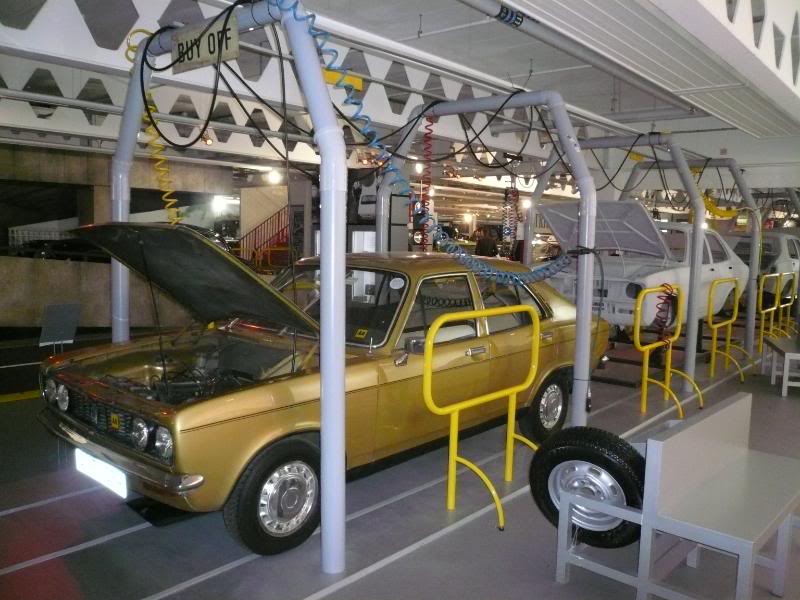The British Museum of Road Transport in Coventry was the venue for the final Forum meeting of 2007, and also my third motoring museum in three weeks. Twas an excellent day. Piers, Andy and I spent just over 5 hours there, until closing time, absorbed in the wide variety of exhibits. The fact that there is no admission charge just made this an even better event! The museum focuses on motoring history related to the Coventry area, and as such, there are a variety of items to see, from bicycles, motor-bikes, all sorts of brands of car, some commercial vehicles, a special display on Land Speed Records, and a lot of period memorabilia from road signs, to printed material, and some very period road safety commercials from the 1960s and 1970s. There’s also a very well stocked shop, full of tempting items – I succumbed to just a couple of models, as they were marked down to half price! The museum is split into a number of display areas, which wind around the building, over 2 separate floors, so you cannot see everything in one glance. Many of those display areas are enhanced by period background material. Before getting to the early motoring area, there are a whole series of cars in the introductory gallery, including these:
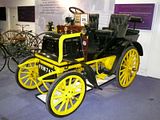
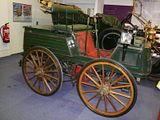
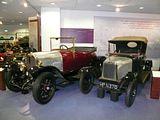
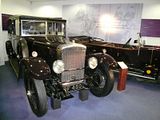
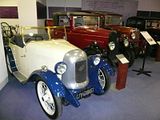
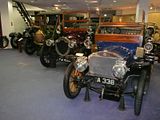
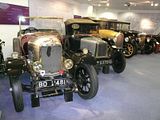
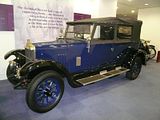
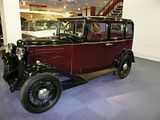 This is the Jaguar Mark X – widest car of its day, and still quite sizeable even by the standards of today’s enlarged vehicles.
This is the Jaguar Mark X – widest car of its day, and still quite sizeable even by the standards of today’s enlarged vehicles.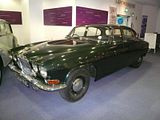 The Standard 10, and Armstrong-Siddely Sapphire, both from the late 50s.
The Standard 10, and Armstrong-Siddely Sapphire, both from the late 50s.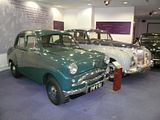
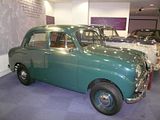 From a similar era was the Standard Ensign, the slightly cheaper version of the popular Vanguard model
From a similar era was the Standard Ensign, the slightly cheaper version of the popular Vanguard model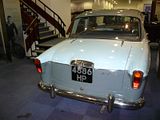 Once a common sight, the Minor Van, seeing service for the GPO, now known as the Royal Mail
Once a common sight, the Minor Van, seeing service for the GPO, now known as the Royal Mail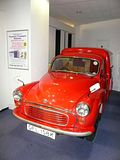 This was an early FX4 taxi – these go back all the way to 1959, believe it or not!
This was an early FX4 taxi – these go back all the way to 1959, believe it or not!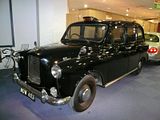 Rather more familiar is this Jaguar “S” Type. This is the actual show car from the NEC 1998 launch – I remember it well!
Rather more familiar is this Jaguar “S” Type. This is the actual show car from the NEC 1998 launch – I remember it well! At this point, we went into the first of the themed areas……… and were delighted to find a special welcome for “The Motor”
At this point, we went into the first of the themed areas……… and were delighted to find a special welcome for “The Motor”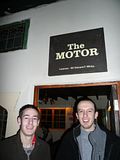 A recreated Pub from 100 years ago, no less.This was an era when traditional blacksmiths forges and little sheds became a sort of “garage”, and this was presented, complete with an Austin Seven in for repairs. A far cry from today’s computerised workshops!
A recreated Pub from 100 years ago, no less.This was an era when traditional blacksmiths forges and little sheds became a sort of “garage”, and this was presented, complete with an Austin Seven in for repairs. A far cry from today’s computerised workshops!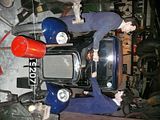

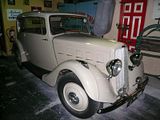 The next themed area was based around the blitz. Coventry suffered more than almost any other city in the UK, and the very dark display area was enhanced with air-raid sirens and other special effects.
The next themed area was based around the blitz. Coventry suffered more than almost any other city in the UK, and the very dark display area was enhanced with air-raid sirens and other special effects.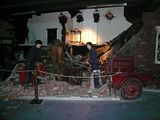
 Once the recovery was underway, Coventry and the British motor industry enjoyed its most successful years ever. There was a particular focus on Triumph cars in this area: An early TR2:
Once the recovery was underway, Coventry and the British motor industry enjoyed its most successful years ever. There was a particular focus on Triumph cars in this area: An early TR2: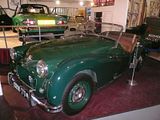 A Triumph 2000 from the late 40s, one of the last with a “dicky” seat:
A Triumph 2000 from the late 40s, one of the last with a “dicky” seat: Equally rare is this rather splendid Triumph Italia:
Equally rare is this rather splendid Triumph Italia: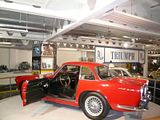
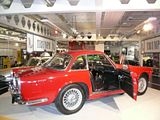
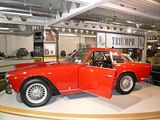 The other turntable in this area was occupied by a Java Green Stag:
The other turntable in this area was occupied by a Java Green Stag:
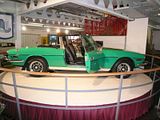 Slightly cheaper in the Triumph range of this time was the GT6. This was a Mark 3, the final model in the range:
Slightly cheaper in the Triumph range of this time was the GT6. This was a Mark 3, the final model in the range: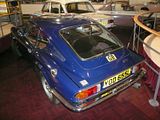
 The GT6 was based on the popular Spitfire, and a rather nice mark 3 model of that car was on show:
The GT6 was based on the popular Spitfire, and a rather nice mark 3 model of that car was on show: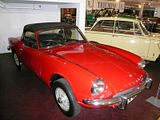 Triumphs were popular with the police, too, and this 2500 is a reminder of the days when the police would always “buy British”
Triumphs were popular with the police, too, and this 2500 is a reminder of the days when the police would always “buy British”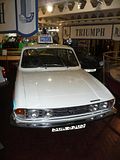
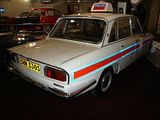 The entry level Triumph throughout the 60s was the Herald – popular with lady drivers, as it was light to drive, and had a turning circle to rival that of the London taxi.
The entry level Triumph throughout the 60s was the Herald – popular with lady drivers, as it was light to drive, and had a turning circle to rival that of the London taxi.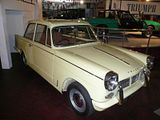 There was a sportier version, called the Vitesse. This was a Mark 2 model, with the 2000 engine fitted.
There was a sportier version, called the Vitesse. This was a Mark 2 model, with the 2000 engine fitted.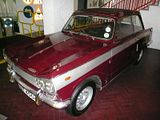
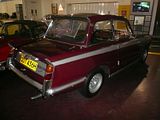 The first fwd Triumph was the 1300, launched in 1965. This was a premium small car, and was perhaps a marketing concept ahead of its time, as there were not that many people ready to pay the extra costs over an 1100, Viva or Escort.
The first fwd Triumph was the 1300, launched in 1965. This was a premium small car, and was perhaps a marketing concept ahead of its time, as there were not that many people ready to pay the extra costs over an 1100, Viva or Escort.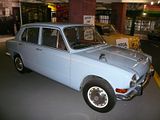
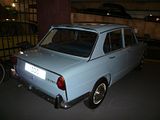 Plenty of people did aspire to the premium luxury car, exemplified by the P6 Rover range. The 3500 model was one of the most coveted cars of its day.
Plenty of people did aspire to the premium luxury car, exemplified by the P6 Rover range. The 3500 model was one of the most coveted cars of its day.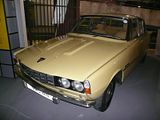
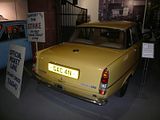 From an earlier era was the Standard Vanguard. This Mark 1 was really aimed at the important export markets – so vital for earning money for the British economy, bankrupted after 6 years of war.
From an earlier era was the Standard Vanguard. This Mark 1 was really aimed at the important export markets – so vital for earning money for the British economy, bankrupted after 6 years of war.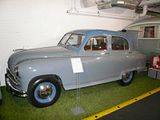 Minis were never made in Coventry, but the link to the city comes from the fact that the tunnel scenes in the original version of “The Italian Job” were filmed in the city!
Minis were never made in Coventry, but the link to the city comes from the fact that the tunnel scenes in the original version of “The Italian Job” were filmed in the city!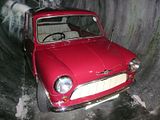 The other important volume maker in the Coventry area was Chrysler – the combination of Hillman, Singer, Sunbeam, Humber and Commer. Several of the Pentastar cars were on show, starting with a recreation of the end of the assembly line for the Hillman Avenger:
The other important volume maker in the Coventry area was Chrysler – the combination of Hillman, Singer, Sunbeam, Humber and Commer. Several of the Pentastar cars were on show, starting with a recreation of the end of the assembly line for the Hillman Avenger: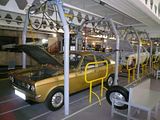 Earlier, the Singer Gazelle was a slightly posher version of the Minx – a popular family car.
Earlier, the Singer Gazelle was a slightly posher version of the Minx – a popular family car.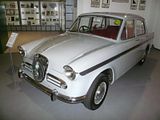
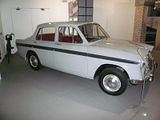 More familiar, perhaps, is the Hillman Imp. This is a late model, dating from 1975, in typical period bright hue
More familiar, perhaps, is the Hillman Imp. This is a late model, dating from 1975, in typical period bright hue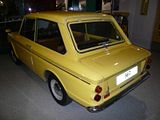 Built in nearby Tamworth was the Reliant Scimitar GTE. Popular even before it gained royal approval when Princess Anne purchased one.
Built in nearby Tamworth was the Reliant Scimitar GTE. Popular even before it gained royal approval when Princess Anne purchased one.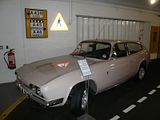 The next part of the display area took us into the Land Speed Record area. Richard Noble’s triumph in capturing the World Land Speed Record on 4th Oct 1983, is celebrated with a series of pictures and commentaries, as well as a display of the Thrust car in which he did it.
The next part of the display area took us into the Land Speed Record area. Richard Noble’s triumph in capturing the World Land Speed Record on 4th Oct 1983, is celebrated with a series of pictures and commentaries, as well as a display of the Thrust car in which he did it. Before going to see the even more amazing dispaly of the Thrust SSC from 1997, you are treated to a 7 minute experience in a simulator. 4 minutes of explanation of the challenges of the 14 mile trip through the sound barrier and back are followed by 3 minutes simulating the sensation that the driver would have felt. Excellent! Then to the special hall where all 10.5 tonnes (!) of Thrust SSC are there to marvel at:
Before going to see the even more amazing dispaly of the Thrust SSC from 1997, you are treated to a 7 minute experience in a simulator. 4 minutes of explanation of the challenges of the 14 mile trip through the sound barrier and back are followed by 3 minutes simulating the sensation that the driver would have felt. Excellent! Then to the special hall where all 10.5 tonnes (!) of Thrust SSC are there to marvel at: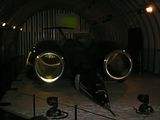
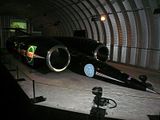
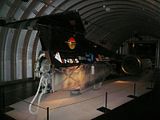 The next hall had a few cars in various states of preservation, and invited visitors to express an opinion on whether they should be fully restored, conserved, or left as is. We recorded our thoughts, of course. Vehicles in here included these: A rare Alvis, of which only 15 are believed to exist. We thought it should be restored:
The next hall had a few cars in various states of preservation, and invited visitors to express an opinion on whether they should be fully restored, conserved, or left as is. We recorded our thoughts, of course. Vehicles in here included these: A rare Alvis, of which only 15 are believed to exist. We thought it should be restored: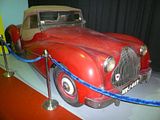 This Standard Atlas has only covered about 1800 miles since it was new in the 1950s….. it looked to be pretty original, and we thought conservation would be appropriate:
This Standard Atlas has only covered about 1800 miles since it was new in the 1950s….. it looked to be pretty original, and we thought conservation would be appropriate: And this Commer seemed to be already in excellent condition, and should have been left as it is
And this Commer seemed to be already in excellent condition, and should have been left as it is Heading upstairs, we came to a large series of cabinets, containing part of the huge Tiatsa model collection, which used to be housed in a museum in its own right in Stratford, years ago.
Heading upstairs, we came to a large series of cabinets, containing part of the huge Tiatsa model collection, which used to be housed in a museum in its own right in Stratford, years ago.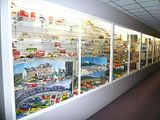
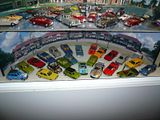 By special request, the bus from the notorious “Stratford Blue” was selected for detailed treatment. Can’t think why!
By special request, the bus from the notorious “Stratford Blue” was selected for detailed treatment. Can’t think why!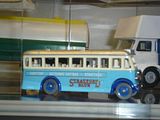 At this point, a welcome refuelling stop, with coffee and cake allowed us to pause, and gather our thoughts on what we had seen, various forum topics, a quick review of 2007, discussion about ideas for 2008 and so on…… Now we found ourselves in the hall they called “icons”. A real mix of stuff here: One of the most significant cars to emerge from Coventry became significant long after UK production finished. This is the Paykaan, for long, the staple of the Iranian car market. Based on the Hillman Hunter, it all looked very familiar, as my first car was my father’s old Hunter estate car.
At this point, a welcome refuelling stop, with coffee and cake allowed us to pause, and gather our thoughts on what we had seen, various forum topics, a quick review of 2007, discussion about ideas for 2008 and so on…… Now we found ourselves in the hall they called “icons”. A real mix of stuff here: One of the most significant cars to emerge from Coventry became significant long after UK production finished. This is the Paykaan, for long, the staple of the Iranian car market. Based on the Hillman Hunter, it all looked very familiar, as my first car was my father’s old Hunter estate car.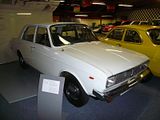 At the time, I wanted him to have one of these instead….
At the time, I wanted him to have one of these instead….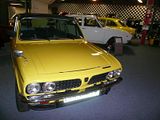
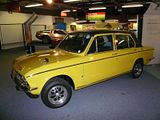 This early Metro is particularly famous, as it is Princess Diana’s car from the days when she was still a nanny, and her first days as a Princess.
This early Metro is particularly famous, as it is Princess Diana’s car from the days when she was still a nanny, and her first days as a Princess.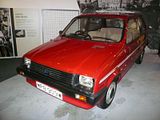 Other cars in this area were a real pot pourri…………….. A Triumph Acclaim – the last ever Triumph.
Other cars in this area were a real pot pourri…………….. A Triumph Acclaim – the last ever Triumph.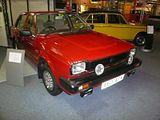 A Delorean:
A Delorean: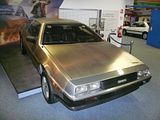 Triumph 2000 Estate – one of the first of the large luxury estates, long before BMW and Mercedes made them really popular
Triumph 2000 Estate – one of the first of the large luxury estates, long before BMW and Mercedes made them really popular
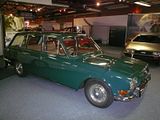 A Mini from the 1980s, complete with the “red nose” from Comic Relief that sprouted on huge numbers of cars for a few weeks!
A Mini from the 1980s, complete with the “red nose” from Comic Relief that sprouted on huge numbers of cars for a few weeks!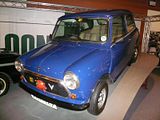 Another very popular car in its day was the Mark 1 Escort. This Daytona Yellow model was an 1100L, with plenty of options and some non-standard wheels.
Another very popular car in its day was the Mark 1 Escort. This Daytona Yellow model was an 1100L, with plenty of options and some non-standard wheels. Lurking behind it was a Rover SD1, with a Kat body kit…….. it was so ghastly that I refused to photo it! Motorsport also featured among many of the Coventry marques, and a few of the successful cars were shown:
Lurking behind it was a Rover SD1, with a Kat body kit…….. it was so ghastly that I refused to photo it! Motorsport also featured among many of the Coventry marques, and a few of the successful cars were shown: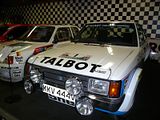
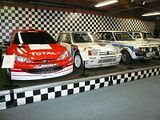 This rather unusual racing device dated from 1967.
This rather unusual racing device dated from 1967.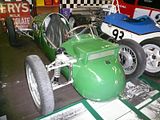 Sunbeam Rapier:
Sunbeam Rapier: Standard Vanguard:
Standard Vanguard: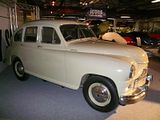 Humber Hawk
Humber Hawk
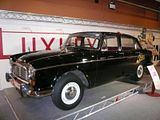 SS1 – the first sleek Jaguar:
SS1 – the first sleek Jaguar: Jaguar “E” Type – a series 3 model
Jaguar “E” Type – a series 3 model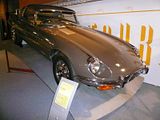 The equally gorgeous Jaguar XK120:
The equally gorgeous Jaguar XK120: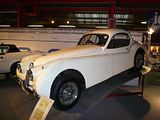 The Triumph TR7:
The Triumph TR7: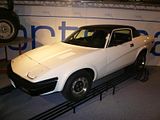 The next hall was for cars from the 1990s to the present day. Peugeot features heavily here. Starting with the 309 – a car that nearly emerged as the Talbot Arizona:
The next hall was for cars from the 1990s to the present day. Peugeot features heavily here. Starting with the 309 – a car that nearly emerged as the Talbot Arizona: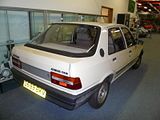
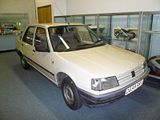 Rather more well regarded was the 405:
Rather more well regarded was the 405: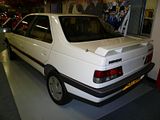 Bringing the Peugeot story to a rather sad conclusion were some final examples of the 206, the last model to be made at Ryton.
Bringing the Peugeot story to a rather sad conclusion were some final examples of the 206, the last model to be made at Ryton.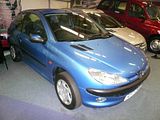
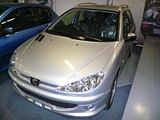 Jaguar remains – despite its new owners – for now, at least, in the Coventry area. This was a mock up for the XK8:
Jaguar remains – despite its new owners – for now, at least, in the Coventry area. This was a mock up for the XK8: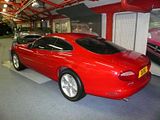 And here is an early “X” Type:
And here is an early “X” Type: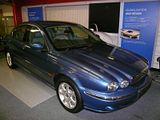 Also operating in the area is Aston Martin, and this was an early DB7:
Also operating in the area is Aston Martin, and this was an early DB7: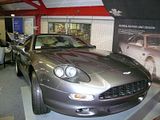 A further display in this area had all sorts of speculation on the future of motoring, and some wacky attempts to introduce smaller and more eco-friendly vehicles. This is an effort from Denmark, from the 1990s:
A further display in this area had all sorts of speculation on the future of motoring, and some wacky attempts to introduce smaller and more eco-friendly vehicles. This is an effort from Denmark, from the 1990s: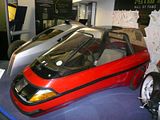 With that, we reached the end of the meander around the museum. Still time to look down into the foyer and see a few cars that are on display there:
With that, we reached the end of the meander around the museum. Still time to look down into the foyer and see a few cars that are on display there: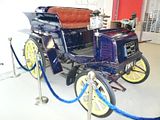
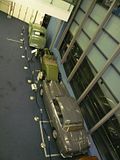 One of the most unusual cars in the museum was this………… the Chrysler Centura. An Australian version of the 180/2-litre from the 1970s………. the Ozzies got a 4 litre engine. The car was no more a success there than the more mundane European versions, sadly.
One of the most unusual cars in the museum was this………… the Chrysler Centura. An Australian version of the 180/2-litre from the 1970s………. the Ozzies got a 4 litre engine. The car was no more a success there than the more mundane European versions, sadly.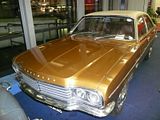
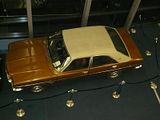
 So, an excellent museum, made even better by the fact that the City of Coventry provides it to everyone for free. A splendid round off to a varied program of Forum events in 2007……….. thanks to everyone for their company. I hope you have all enjoyed them like I have. Here’s to 2008!
So, an excellent museum, made even better by the fact that the City of Coventry provides it to everyone for free. A splendid round off to a varied program of Forum events in 2007……….. thanks to everyone for their company. I hope you have all enjoyed them like I have. Here’s to 2008!2009-12-18 18:21:27






























































































